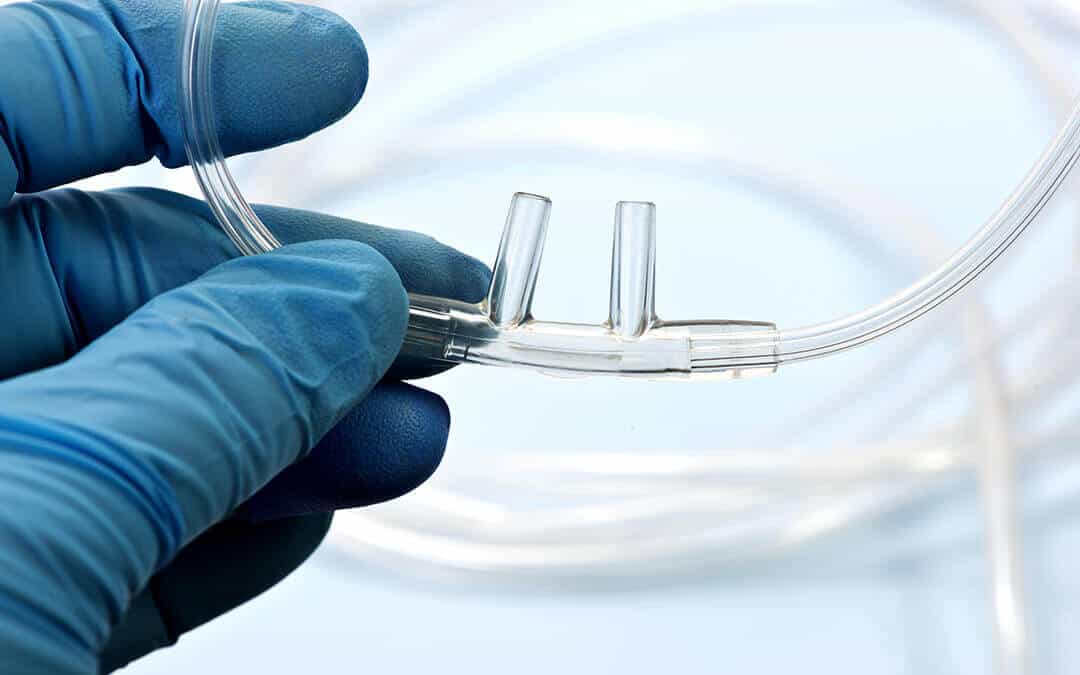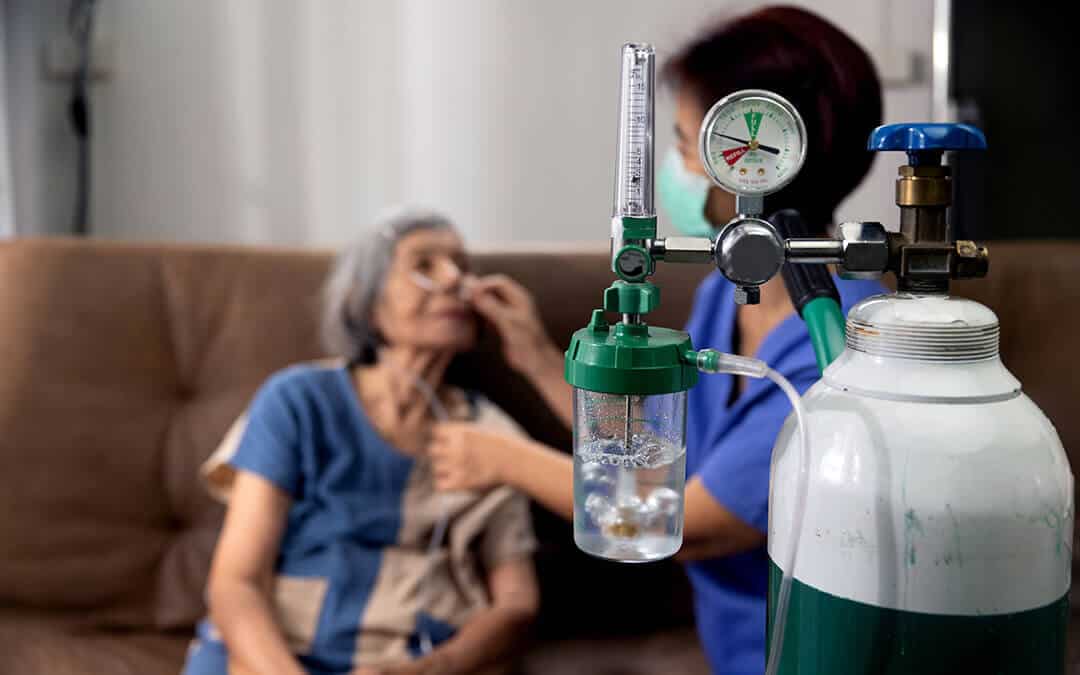As COVID-19 picks up again, concerns about how to best treat this difficult disease have risen as well. But a new JAMA study has come out, showing that patients with severe COVID-19 who received high-flow oxygen therapy were less likely to need mechanical ventilation and had a quicker recovery. But what is high-flow oxygen therapy, and how can it help COVID-19 patients recover?
High-Flow Oxygen Therapy

Delivered through nasal prongs, high-flow oxygen therapy offers a non-invasive way to provide higher rates of oxygen to a patient. This breathing support provides continuous, warmed (up to 37 degrees) and humidified oxygen administered through the nostrils, creating a warm, full feeling in the lungs. High-flow oxygen therapy reduces the effort of breathing on the body, allowing the body to recover more swiftly. By decreasing the effort of breathing, this therapy creates a small amount of positive pressure in the upper airways and helps to improve oxygen delivery.
Typically, high-flow oxygen therapy is used for people who are in respiratory distress or when traditional oxygen therapy isn’t helping, such as with COVID-19 patients. It’s also used to treat patients with asthma, pneumonia, lung cancer, acute respiratory distress, and more. When compared to oxygen therapy delivered through a face mask, high-flow oxygen therapy offers more benefits to the patient, including:
- Better clearance of fluids due to humidified air
- Improved comfort
- Reduced airway inflammation
How Can It Help COVID Patients?

In the study, researchers in Colombia and Brazil analyzed over 100 patients with severe COVID-19. The patients were randomly assigned either high-flow oxygen or conventional oxygen therapy, then monitored for several months. Patients who received high-flow therapy were given a mixture of heated and humidified oxygen through the nose at high flow rates. Those who received conventional oxygen therapy were provided with a limited flow of oxygen through nasal prongs, cannula or masks. By the end of the study, only 34.3% of the patients who were given high-flow oxygen needed intubation, compared to 51.0% of patients assigned conventional oxygen therapy. Between the two groups, the median time to recovery was 11 vs. 14 days, respectively.
So what do those numbers mean? In short, they mean that high-flow oxygen therapy was indeed helpful in treating COVID-19 patients. With its improved oxygen flow, the therapy offered a lower risk of intubation, shorter in-hospital and intensive care stays, plus a faster recovery for the majority of patients. The authors of the study also noted that high-flow oxygen therapy could prevent invasive mechanical ventilation complications such as sedation and neuromuscular paralysis. And in a time where there are shortages for everything and overwhelming pressure on hospitals, high-flow oxygen therapy helps preserve important resources during surges.
The study concluded that this safer oxygen therapy can offer major advantages if given early on to COVID-19 patients. While not a cure-all, high-flow oxygen therapy provides some much-needed relief and support in the fight against COVID-19. If you’re looking to add this type of therapy to your medical offerings, consider CalOx. At CalOx, we are dedicated providers of medical-grade oxygen that can treat everything from COVID-19 to pneumonia. From hospitals to various kinds of doctors’ offices — including veterinarians, dentists, and other medical practitioners — we’ve been providing medical-grade oxygen around Southern California for over 80 years. FDA-certified, we’re dedicated to making medical oxygen delivery, storage, and service simple and dependable. Contact us today for a free quote!
Sources:
https://jamanetwork.com/journals/jama/article-abstract/2786830
https://www.uptodate.com/contents/covid-19-respiratory-care-of-the-nonintubated-hypoxemic-adult-supplemental-oxygen-noninvasive-ventilation-and-intubation
https://www.cidrap.umn.edu/news-perspective/2021/12/high-flow-oxygen-cuts-ventilator-use-speeds-covid-recovery
https://www.contagionlive.com/view/high-flow-oxygen-reduces-need-for-mechanical-ventilation-in-severe-covid-19
https://www.svhlunghealth.com.au/procedures/procedures-treatments/high-flow-oxygen-therapy
